How to use blogging to boost your small business’s sales
Blogging is a go-to content marketing strategy for a reason – it works. Stats show that:
- 70% of consumers learn more about a company through its blog content than through ads
- Businesses that blog get 126% more leads than those without
Why does it work? Because unlike traditional marketing where you tell prospects to buy a product or service, your blog content can actually do your selling for you, without the need to be “salesy”.
It’s simple, really. When your blog content is filled with useful information and advice, you become a valued resource for your target audience. And when you provide value you gain people’s trust. And when you have their trust, you’re more likely to get their business too.
Next, we’ll look at a few ways you can use blogging to increase sales for your small business.
Go with in-depth, long-form content
Let’s face it: there are so many blogs and so much content out there that no one’s reading, commenting on or sharing. So if no one is paying attention to it, of course it doesn’t generate any sales.
But why aren’t people paying attention? Because they have no reason to.
Here’s the thing: if you’re blogging just because you’ve seen the stats and you want to fill your blog with some content, if you’re writing fluff pieces that no one is interested in, if you’re only using your blog to add keywords and links to your products, then you’re doing it wrong.
You shouldn’t be surprised if people don’t know you exist, or if they don’t come back to read you or to buy from you. You’re giving them no reason to.
But if you’re blogging to provide value to your readers, to educate, inform and delight them, then you’re already ahead of your competition and on your way to success.
A great way to provide more value to your audience is to go in-depth into topics that they care about. In other words, write longer articles filled with lots of useful information on a specific topic.
A survey by Orbit Media of 1000+ bloggers revealed that more than half of the bloggers who write 2000+ word articles report “strong results”.
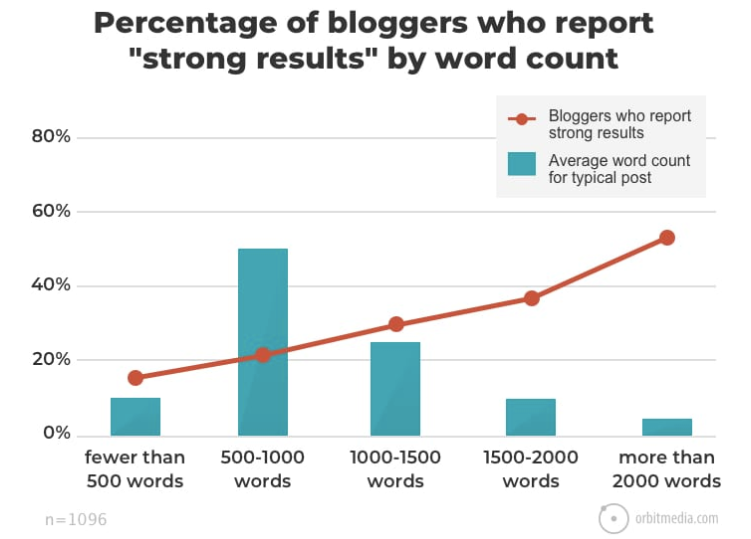
This is not to say that in-depth content gets people’s attention because it’s more than 1,000 words long. No. It gets attention because it’s packed with great information and advice that nobody else is sharing.
Of course, it also helps if you can find an interesting topic, an original angle or a unique approach so as to differentiate yourself even more from what’s already available on the web.
Be consistent
You know how you can never lose weight if you go to the gym whenever you have time, like tomorrow and then maybe two weeks after that?
It’s the same with blogging. You can’t turn your blog into a money-making machine if you publish content whenever you want or whenever you can find some free time in your busy schedule. It doesn’t work like that.
You need to be consistent. It’s the only way to build a loyal readership that spends more time on your blog and keeps coming back to read your content, and hopefully to buy from you.
Now, whether you publish a new article once or twice a week, that’s up to you to decide what works best for you, your audience, and your schedule. Just make sure you’re consistent because your readers have certain expectations from your blog. And it’s your job to fulfil those expectations, otherwise they’ll stop coming back.
Aside from enticing readers to come back to read new content, another reason why publishing regularly helps is because Google, too, loves fresh content.
When you’re consistently updating your blog, Google will favour you over other sites that aren’t so fresh on the content front. In other words, you’ll be more visible in the search results pages, which results in more traffic to your blog and site.
Now that you know how important it is to publish blog content regularly, you might also enjoy reading this post with a few strategies to help cut your blogging time in half.
Optimise your blog posts using relevant keywords
Optimising content using relevant keywords doesn’t just apply to your website content but to your blog posts, too. So make sure you take the time to include relevant keywords in every piece of content you publish on your blog.
Why? Because you’ll get more traffic since it’ll make it easier for your audience to find your blog posts at the top of the search results page.
Now, if you want to take it one step further, try to optimise your posts using long-tail keywords. Unlike short, generic keywords that are very competitive, long-tail keywords are descriptive, thus more specific, and also high-intent.
So if you’re writing a post about wedding gift ideas, for example, instead of optimising it using a generic keyword like “wedding gifts”, you can try a long-tail keyword like “wedding gift ideas for best friend” or any other from Google’s suggestions:
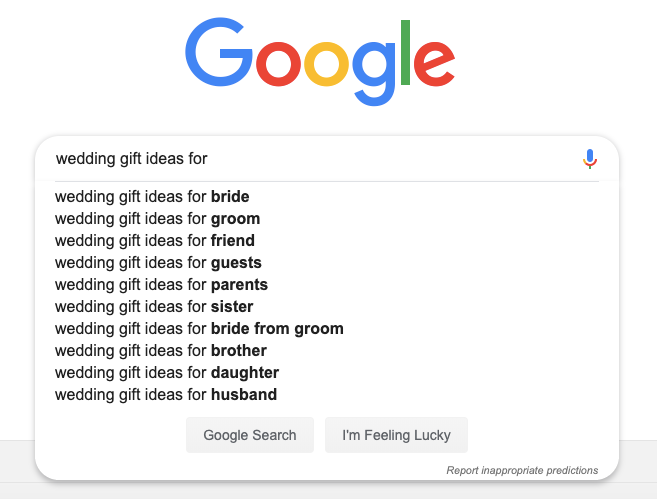
When you’ve very specific with your keywords, you have a better chance of attracting users who are actually interested in your content and business.
Find out more about long-tail keywords and check out our guide to learn how to properly optimise a blog post.
Add visuals to your blog content
The same survey from Orbit Media revealed that bloggers who add the more compelling media formats (video and audio) are more likely to report “strong results.”
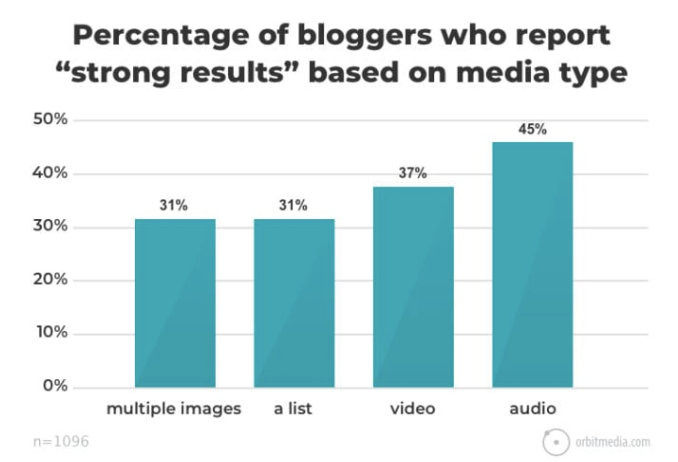
Why are visuals useful? Because people skim blog posts. So when you use visuals in your posts, like images, GIFs and videos, you’re helping to make your content easier to read and understand.
Not only that, but powerful visuals also help to grab people’s attention when you share your blog posts on social media.
Additionally, if you take the time to optimise your images and videos, which we highly recommend, you can increase your chances of showing up at the top of the search engines results when people search for similar content.
Check out our guide to optimising images for search engines and read about other key visual elements that your business blog needs to succeed.
Tell readers what to do next
If your blog content is valuable, why not give readers the opportunity to learn more about what you do and how you can help them?
It’s time to use your blog to turn readers into customers and hopefully make a profit.
How? Simple. Add a call-to-action (CTA) at the end of each blog post and ask them to download a useful resource like a case study or an ebook, or to subscribe to your blog so they’re notified whenever you publish new blog posts.
Make sure your CTA is large and meaningful so that it doesn’t go unnoticed. Here’s an example from Social Media Examiner:
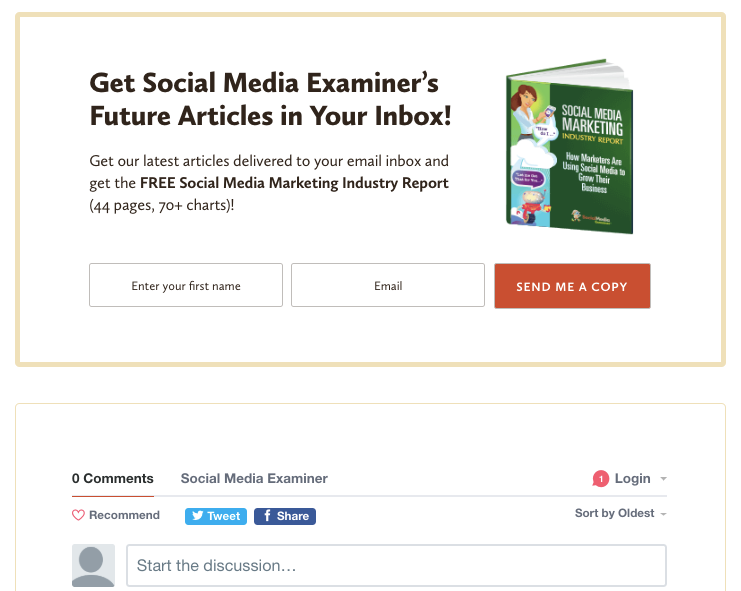
In our beginner’s guide to building your first email list you’ll find lots more examples and tips on how to entice readers to sign up to your mailing list.
Reference products or services in your posts (where relevant)
You’re a business. You need to sell your products and services to thrive. So why not mention your offering in your blog posts?
Just make sure you only do it when it makes sense and when it’s relevant to the content in that specific post.
In addition, don’t copy and paste all the features and benefits from your website, and don’t be “salesy”. The idea is to mention a product or a service when it’s part of the solution you’re already offering in your post.
Here’s a good example from Trello’s blog where the topic of the post is “how to shorten study time and still get results as a student“.
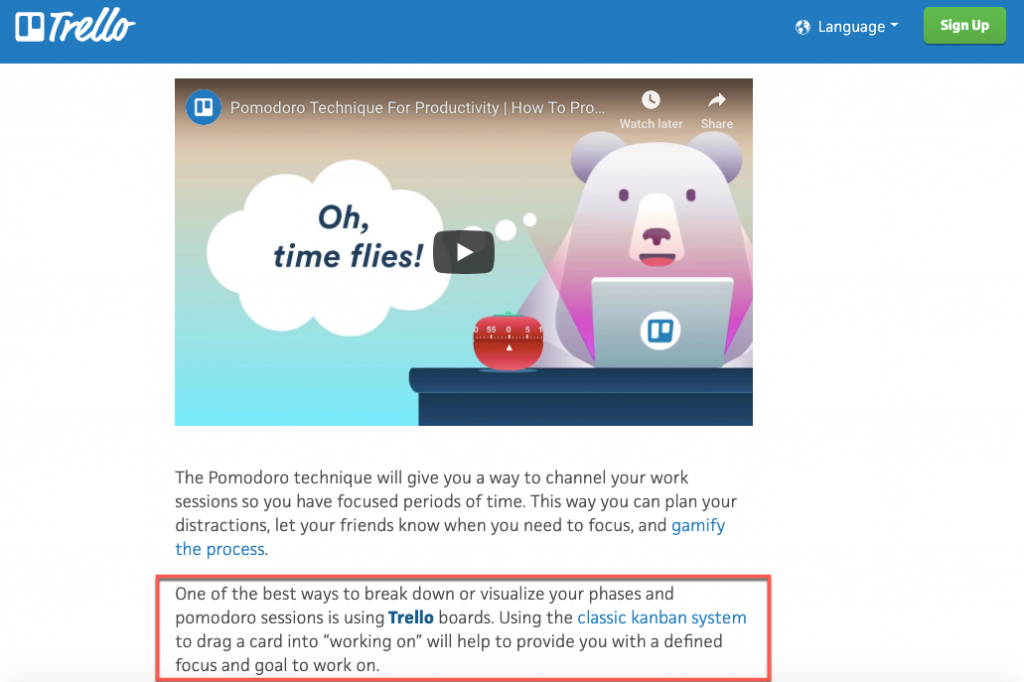
Wrapping up
These are just a few ways you can use blogging to boost your small business sales. Try them out and see how they work for your blog.
Don’t forget to also spread the word about your blog to attract more readers and potential customers. If you don’t know how, here are ten effective tactics to promote your blog and get more readers. Good luck!
